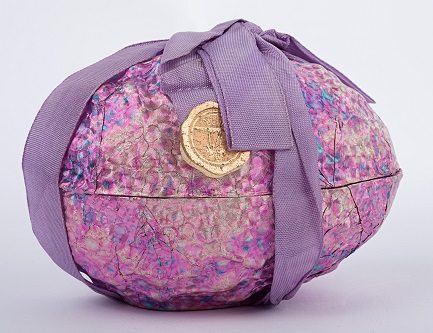York Castle Museum Reveals Chocolate Eggs Which Have Remained Uneaten After More Than 90 Years

13 April 2017
York Castle Museum has revealed two of the oldest wrapped chocolate Easter eggs in existence: a Terry’s Chocolate egg (pictured) and a second Rowntree’s egg which are both believed to be more than 90 years old.
The Rowntree’s Egg was bought by a 14 year old boy for his mother in 1926 who kept it as a keepsake. The Terry’s egg was donated to the museum after the boy it was intended for sadly died before Easter arrived.
It is also believed to be from the 1920’s – making the pair two of the oldest unwrapped eggs in the world. The Terry’s egg will be on show with other Easter eggs at York Castle Museum this Easter as part of its new experience Chocolate: York’s Sweet Past.
Katie Brown, assistant curator at York Castle Museum, said: “At over 90 years old these eggs are extremely rare. They are also in incredible condition, with the chocolate amazingly left untouched for decades. ”
Katie added:
“The Terry’s egg has an incredibly sad story about how it came to be in our collections – the short note which accompanied it simply says the boy who owned the egg had passed away. Unfortunately we aren’t able to say who he was and where he lived and this information is probably lost forever.”
The Rowntree’s Egg has just been donated to York Castle Museum by Jacqueline Harvey from Amersham, Buckinghamshire. It was given by her father, Geoff Walker, when he was 14 to his mother as a present in 1926 when they lived in Holloway, London. He had bought it for 2/6d.
Jacqueline said:
“I don’t know why my grandmother did not eat it at the time but I am just so pleased that she didn’t! I am planning to come to York later this year and I am looking forward to seeing the egg.”
Alongside these, other chocolate eggs ranging from 1930s-1980s will be included in the new exhibition. These include a Nestle egg dating 1956. Wrapped in gold foil and placed in a presentation box, it was given by a soldier to his mother on the eve of his departure for National Service just before the Suez Crisis. Although the soldier only got as far as being on board a ship, according to the note, his mother kept the egg as a memento. The note also states ‘For the museum and not for consumption!!!’.
This Easter half term, visitors can also see how Easter eggs are made and try a sample in the Castle Kitchen, then make Easter baskets to take home. For full listings of events please click here.


